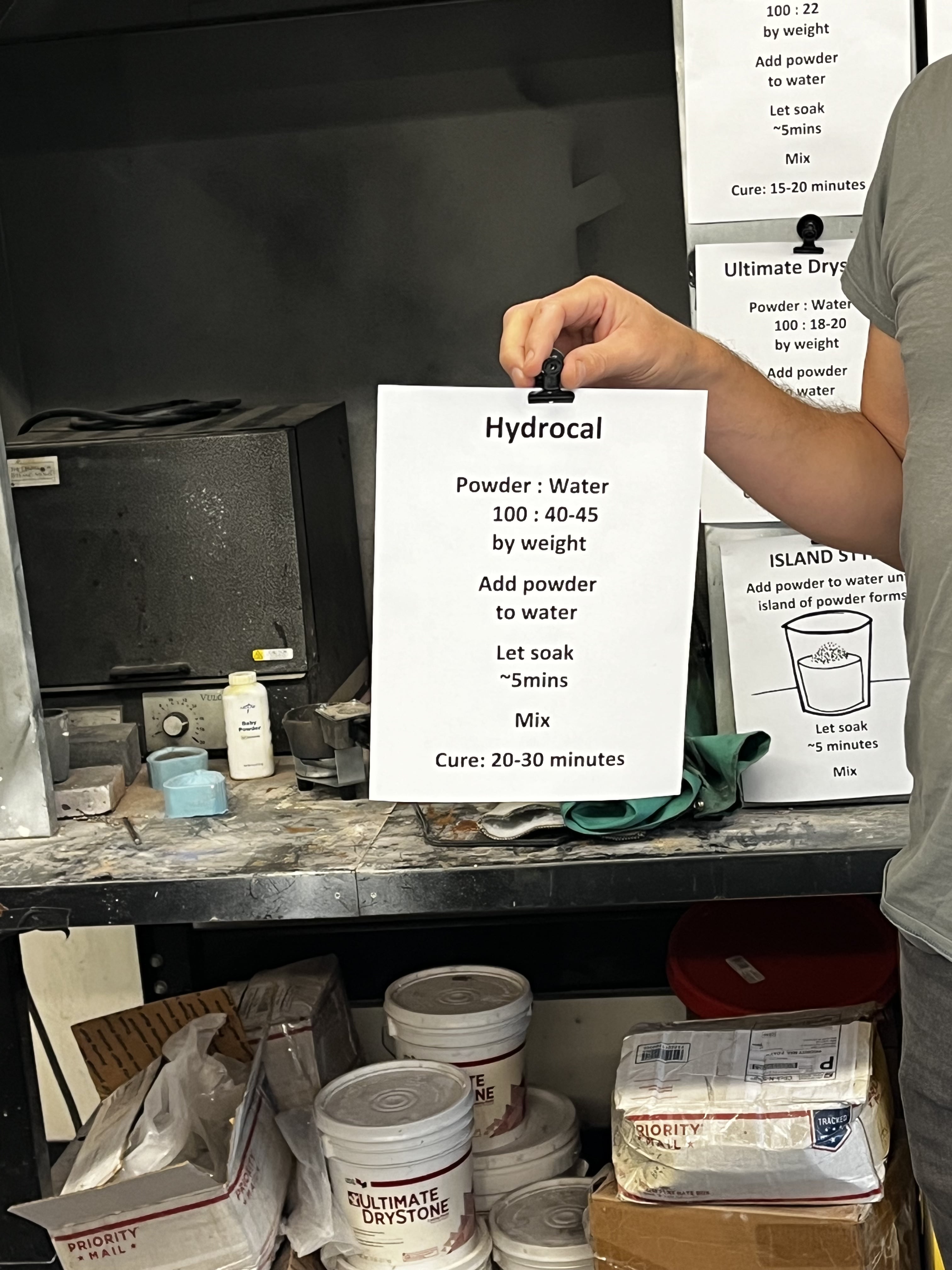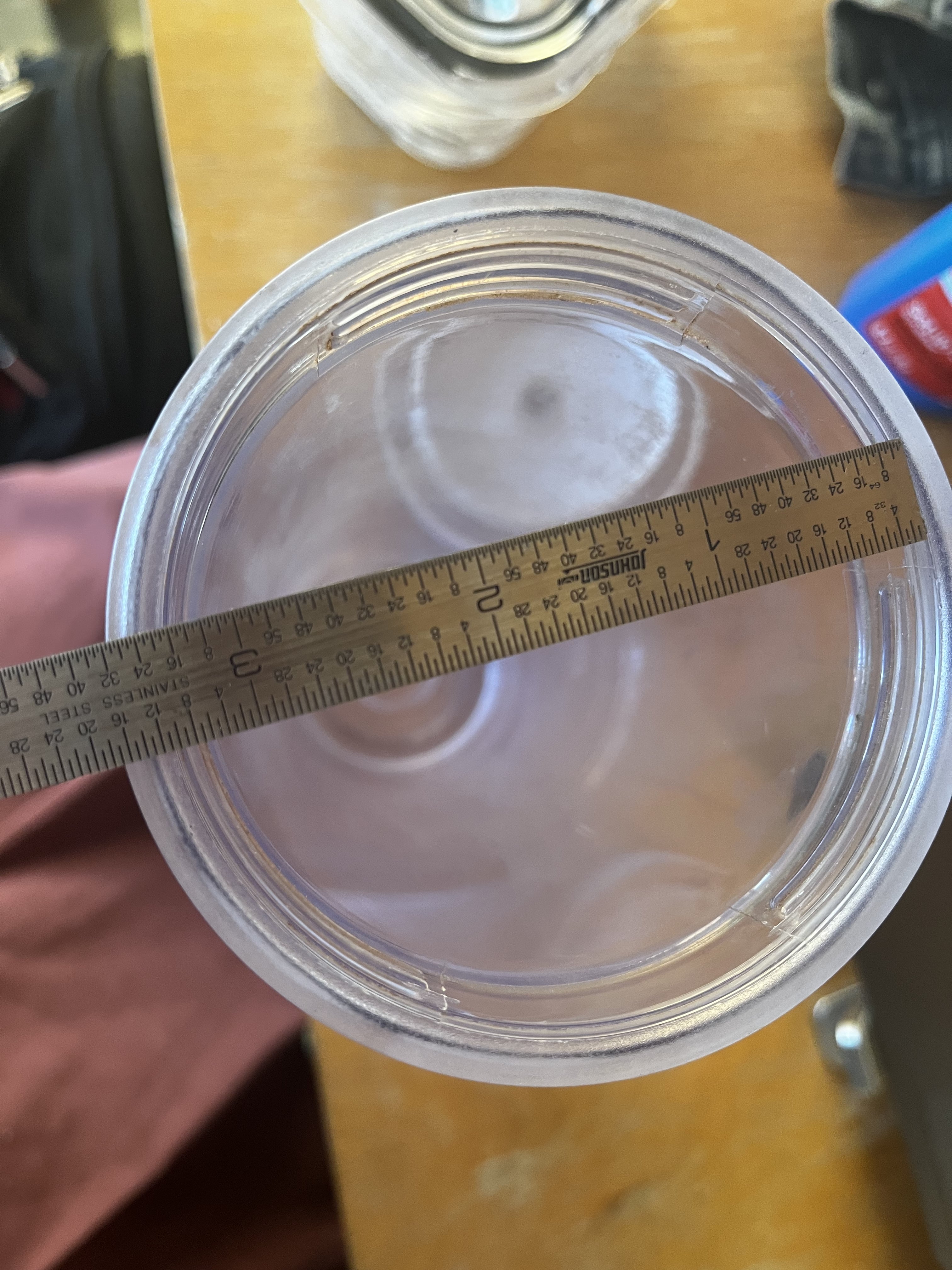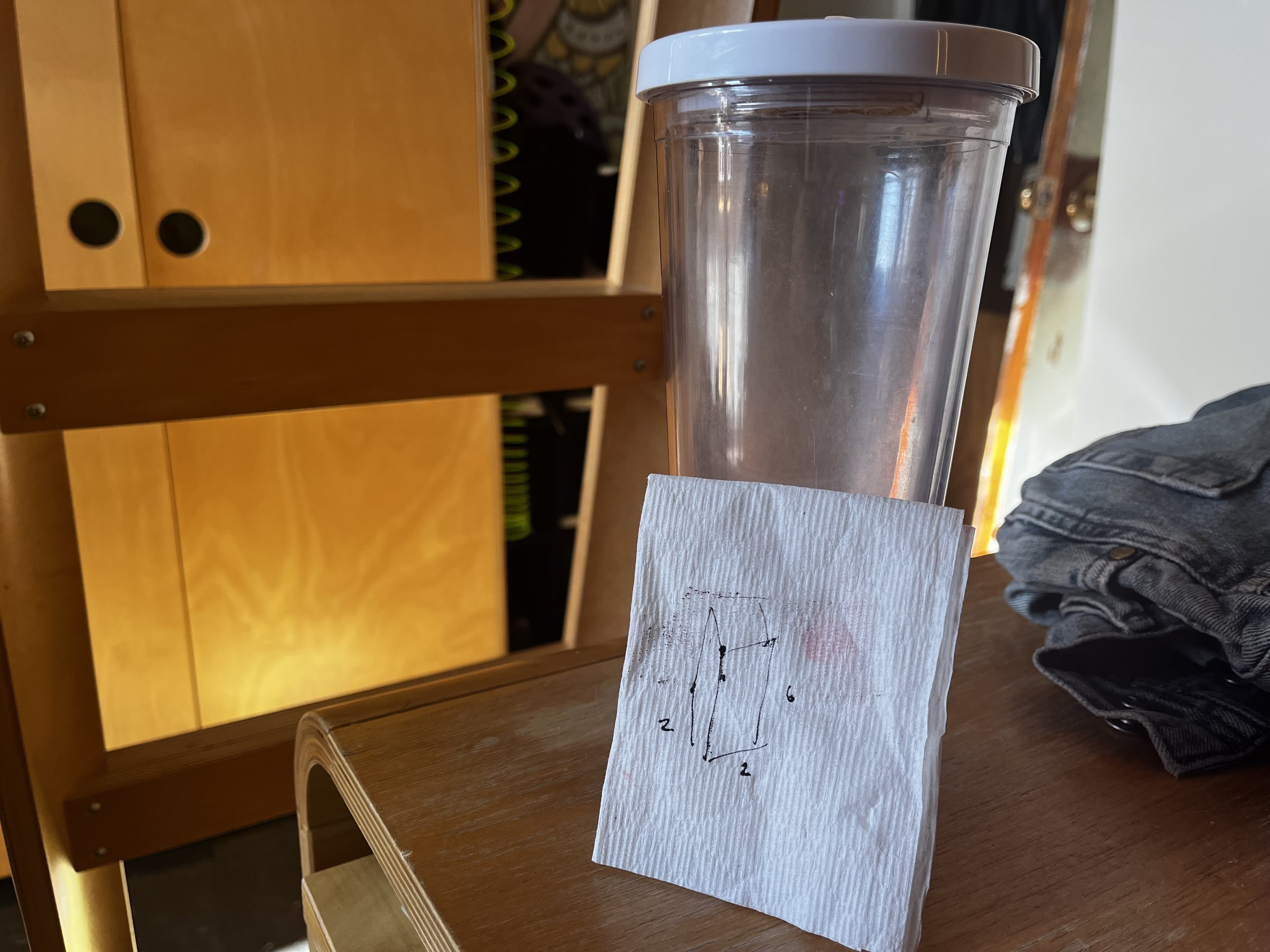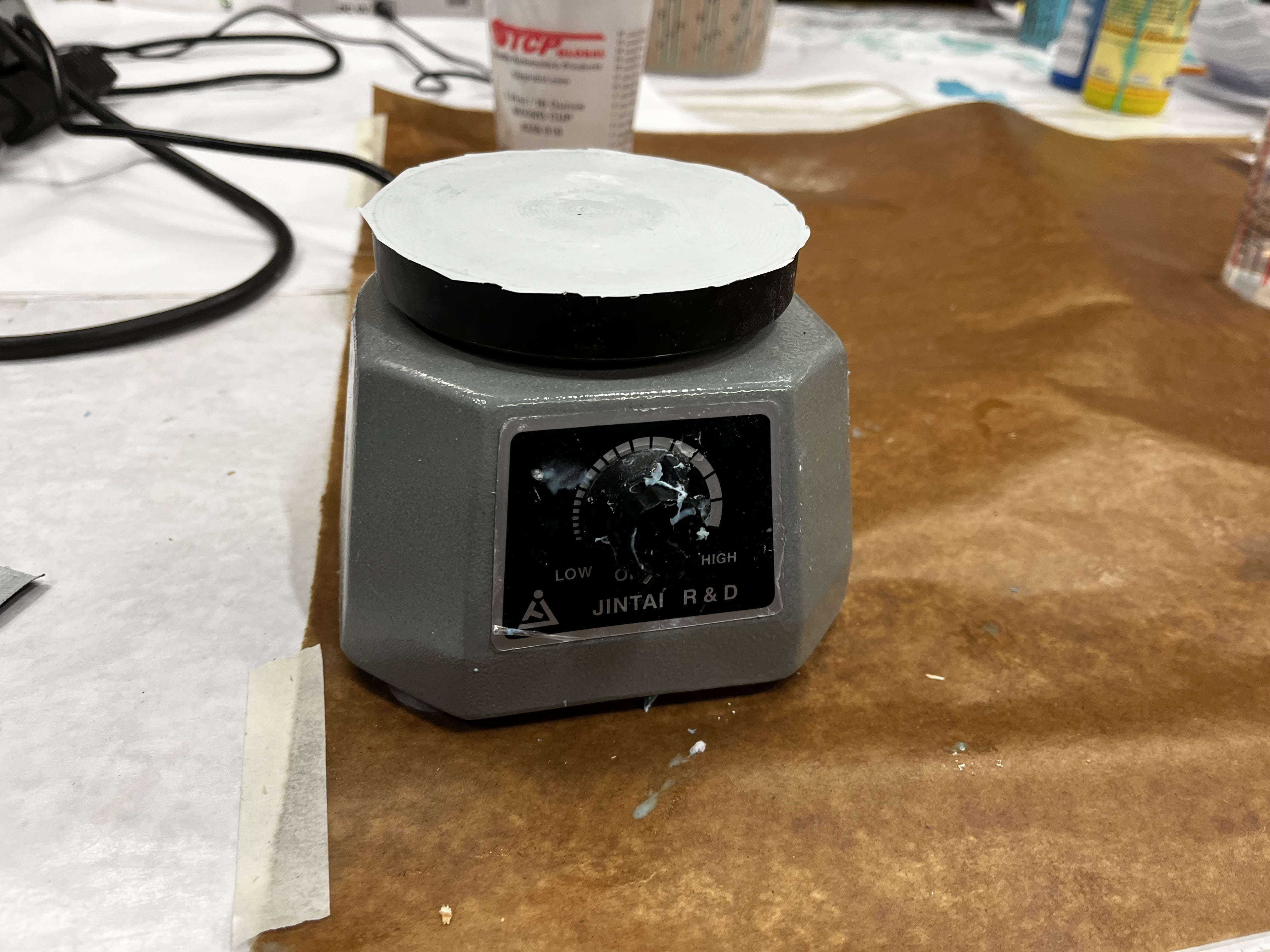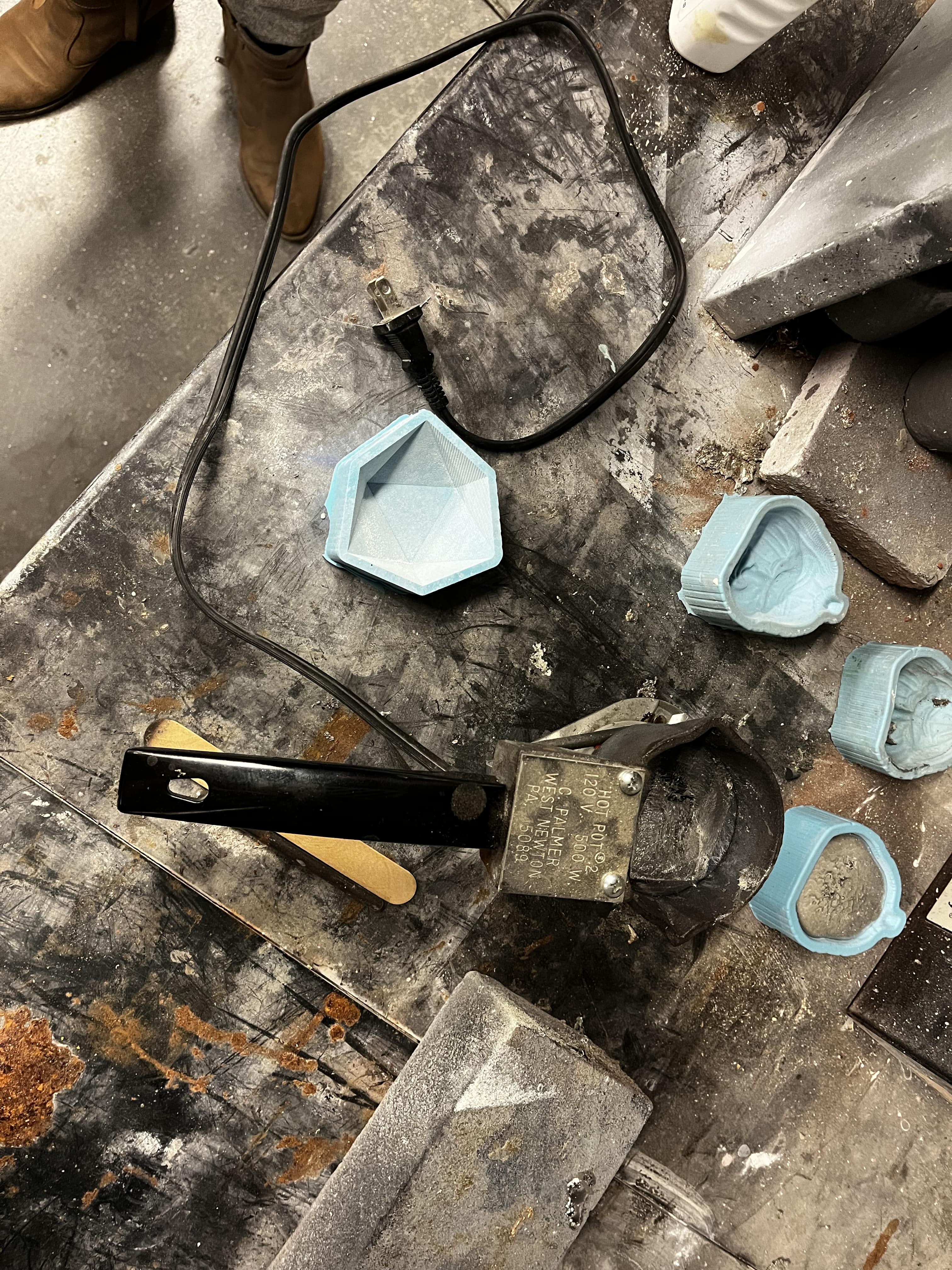Isocahedron Silicone Tray
made with molding and casting
To Do
Group Assignment
- review the safety data sheets for each of your molding and casting materials,
- then make and compare test casts with each of them
- extra credit: try other molding and casting processe
Individual Assignment
- design a mold around the stock and tooling that you'll be using,
- mill it (rough cut + three-axis finish cut),
- and use it to cast parts
- extra credit: use more then two mold parts
Tools
- Software: Onshape
- Machines: Metal melter
Materials
- Oomoo
- Metal allow
- Plaster
I completed the group assignment by attending two trainings: (1) operating the CNC mill and (2) molding and casting.
For the CNC mill, I took notes and an audio recording, albeit John, the person running the training, said all information was in his detailed guide. He said that if you follow every step in the guide, you should be good to go, so I abided by that.
For molding and casting, we learned how to work with oomoo (silicone), hydrocal (plaster), and metal. There were 1-pagers of every material on display in the shop, so the process was pretty self-explanatory.
Ideation
I went through a few ideas, and eventually landed on making an icosahedron ice cube tray. Why an ice cube tray? I wanted big chunks of ice (compared to what conventional ice cube trays produce) so that they’d melt slower in my Monday matcha lattes. Why icosahedrons? The philosopher Plato believed the world was fundamentally comprised of five geometric solids, which were eventually named the Platonic solids. The icosahedron, a 20-sided polyhedron, is one of them. I chose that solid as opposed to the others for two reasons: (1) the icosahedron is associated with the water element and (2) opposed to the other solids, icosahedrons are the closest shape to a sphere and therefore could most efficiently take up space in my water bottle.
I took measurements of my water bottle and modeled my CAD file accordingly.
Making
First, I created my CAD model in Fusion360 and milled on the ShopBot Desktop. John had to slice my design in half so that the design wouldn’t have overhangs, which worked out fine because the design is roughly symmetrical I could just make two pieces and adhere them together. The spindle of the mill worked through a block of wax that was hot glued to a piece of wood for stability.
Second, I created my mold by pouring oomoo into the carved wax.
Third, I created several casts by pouring other materials: plaster, metal, and water.
Finally, I ended up with 5 artifacts: a wax model, silicone mold, plaster casting, metal casting, and ice casting. I may not have gotten the full ice tray nor the full icosahedron, but I did get enough for one block of ice and half of an icosahedron, which taught me the skills that I hoped to learn. In the future, I want to learn to work with food-safe materials, as that process is more rigorous and would be required for an ice tray. Also, making a multi-part mold would be good so that I could get a full icosahedron in one cast. One day…
